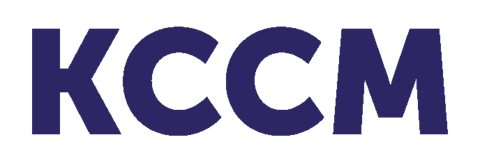Scaling up your VVUQ Workflows. Practical Automation with EasyVVUQ and Dask on HPC.
Date and time:
15 October 2025 at 16:30 pm
Place:
Academic Computer Centre CYFRONET
of the AGH University of Krakow
Nawojki 11 street
30-950 Kraków
Maximum number of participants: 20
Duration: 1h
Karol Zając1, Piotr Nowakowski1,2, and Levente Sandor3
1Sano Centre for Computational Medicine, Czarnowiejska 36, 30-054 Kraków, Poland
2ACC Cyfronet AGH, ul. Nawojki 11, 30-950 Kraków, Poland
3Department of Hydrodynamic Systems, Budapest University of Technology and Economics, Faculty of Mechanical Engineering, Műegyetem rkp. 3, H-1111 Budapest, Hungary
{k.zajac,p.nowakowski}@sanoscience.org, lsandor@hds.bme.hu
Keywords: VVUQ, Sensitivity Analysis, Workflow Automation, Large-Scale, HPC
1. Introduction
This tutorial introduces participants to modern tools for Verification, Validation, and Uncertainty Quantification (VVUQ) in scientific modeling, with a focus on automating and scaling VVUQ workflows on High-Performance Computing (HPC) infrastructure. Through the use of the EasyVVUQ library and Dask parallel computing framework, researchers can efficiently run complex Sensitivity Analysis (SA) and Uncertainty Quantification (UQ) campaigns across many simulations. The session aims to demonstrate how these tools integrate seamlessly with HPC schedulers such as SLURM and MPI environments, enabling robust, reproducible, and scalable VVUQ pipelines.
2. Description of the tutorial
This 1-hour hands-on tutorial blends conceptual introduction with live demonstrations. It is designed for researchers and software engineers looking to adopt or streamline VVUQ methodologies in their computational workflows. The session will cover:
1. VVUQ Concepts and Motivation: Introduction to VVUQ in scientific computing.
2. Automating VVUQ with EasyVVUQ: Learn to define parameters, set up encoders/decoders, and run campaigns with EasyVVUQ.
3. Scalable Execution with Dask: Use Dask (JobQueue/MPI) with SLURM to distribute jobs and monitor performance.
4. Use Case: Hemodynamics Simulation Campaign (VirtualFD): Hands-on application to a real-world example from GEMINI project.
3. Knowledge and skills to be gained
By the end of this tutorial, participants will be able to:
• Understand the principles of VVUQ and their role in computational modeling.
• Set up and manage VVUQ workflows using EasyVVUQ.
• Configure and run large-scale UQ/SA simulations using EasyVVUQ and Dask.
• Analyze and visualize sensitivity and uncertainty results efficiently.
Acknowledgements: This tutorial is made possible by the contributions and results from the following projects: InSilicoWorld (grant agreement no. 101016503), GEMINI (grant agreement no. 101083771).
References:
- InSilicoWorld project: https://insilico.world/
- GEMINI project: https://dth-gemini.eu
- Suleimenova, D., Arabnejad, H., Edeling, W., Coster, D., Luk, O., Lakhlili, J., … Groen, D. (2021). Tutorial applications for Verification, Validation and Uncertainty Quantification using VECMA toolkit. Journal of Computational Science, 53. doi:10.1016/j.jocs.2021.101402
- P.L.J. Hilhorst, B.B.E. van de Wouw, K. Zajac, M. van ’t Veer, P.A.L. Tonino, F.N. van de Vosse and W. Huberts. “Sensitivity analysis for exploring the variability and parameter landscape in virtual patient cohorts of multi-vessel coronary artery disease.” Philosophical Transactions of the Royal Society A: Mathematical, Physical and Engineering Sciences 383, no. 2293. https://doi.org/10.1098/rsta.2024.0230
- EasyVVUQ: Uncertainty intervals for everyone: https://easyvvuq.readthedocs.io/en/dev/
- Dask Distributed documentation web site: https://distributed.dask.org/en/stable

